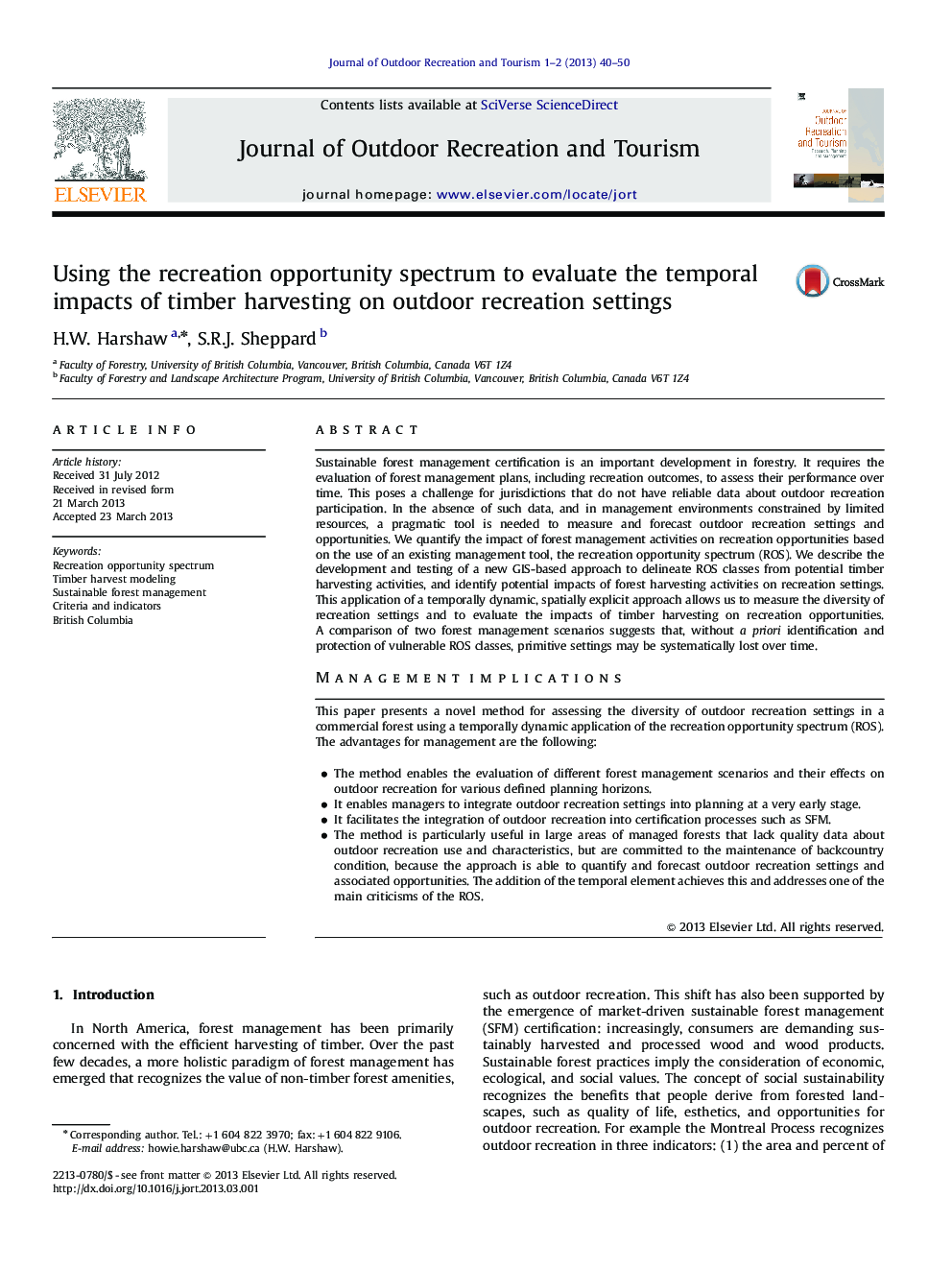| کد مقاله | کد نشریه | سال انتشار | مقاله انگلیسی | نسخه تمام متن |
|---|---|---|---|---|
| 92440 | 159958 | 2013 | 11 صفحه PDF | دانلود رایگان |

Sustainable forest management certification is an important development in forestry. It requires the evaluation of forest management plans, including recreation outcomes, to assess their performance over time. This poses a challenge for jurisdictions that do not have reliable data about outdoor recreation participation. In the absence of such data, and in management environments constrained by limited resources, a pragmatic tool is needed to measure and forecast outdoor recreation settings and opportunities. We quantify the impact of forest management activities on recreation opportunities based on the use of an existing management tool, the recreation opportunity spectrum (ROS). We describe the development and testing of a new GIS-based approach to delineate ROS classes from potential timber harvesting activities, and identify potential impacts of forest harvesting activities on recreation settings. This application of a temporally dynamic, spatially explicit approach allows us to measure the diversity of recreation settings and to evaluate the impacts of timber harvesting on recreation opportunities. A comparison of two forest management scenarios suggests that, without a priori identification and protection of vulnerable ROS classes, primitive settings may be systematically lost over time.Management implicationsThis paper presents a novel method for assessing the diversity of outdoor recreation settings in a commercial forest using a temporally dynamic application of the recreation opportunity spectrum (ROS). The advantages for management are the following:
• The method enables the evaluation of different forest management scenarios and their effects on outdoor recreation for various defined planning horizons.
• It enables managers to integrate outdoor recreation settings into planning at a very early stage.
• It facilitates the integration of outdoor recreation into certification processes such as SFM.
• The method is particularly useful in large areas of managed forests that lack quality data about outdoor recreation use and characteristics, but are committed to the maintenance of backcountry condition, because the approach is able to quantify and forecast outdoor recreation settings and associated opportunities. The addition of the temporal element achieves this and addresses one of the main criticisms of the ROS.
Journal: Journal of Outdoor Recreation and Tourism - Volumes 1–2, June 2013, Pages 40–50